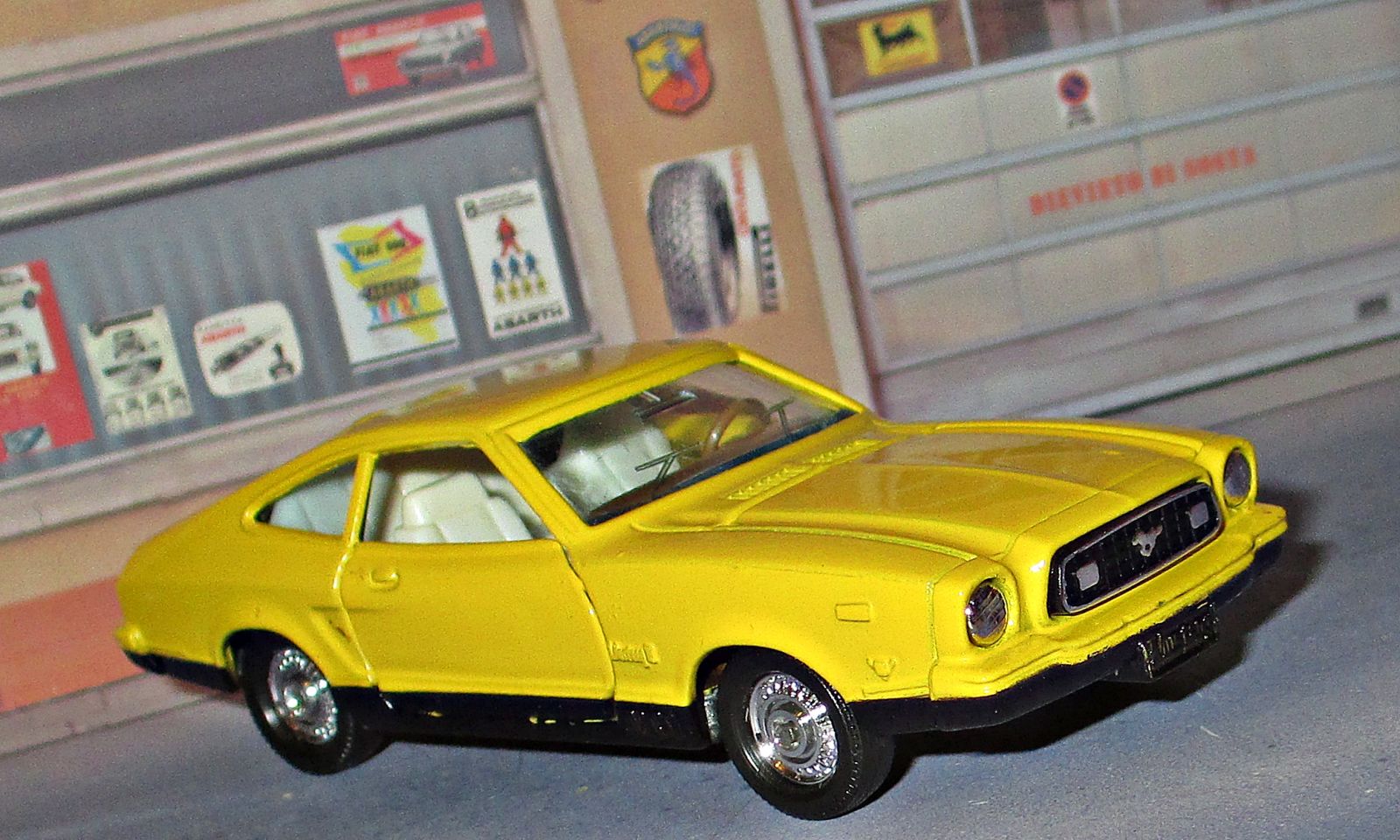
After becoming president of Ford Motor Company in 1970, Lee Iacocca ordered the development of a smaller Mustang for 1974 introduction. Initial plans called for a downsized Mustang based on the compact Ford Maverick, similar in size and power to the Falcon, the basis for original Mustang. Those plans were later scrapped in favor of a smaller Mustang based on the subcompact Ford Pinto. The final Mustang II production design was set in 1971 by Dick Nesbitt, but the new model was “less of a Pinto than the ‘64½ had been a Falcon.”
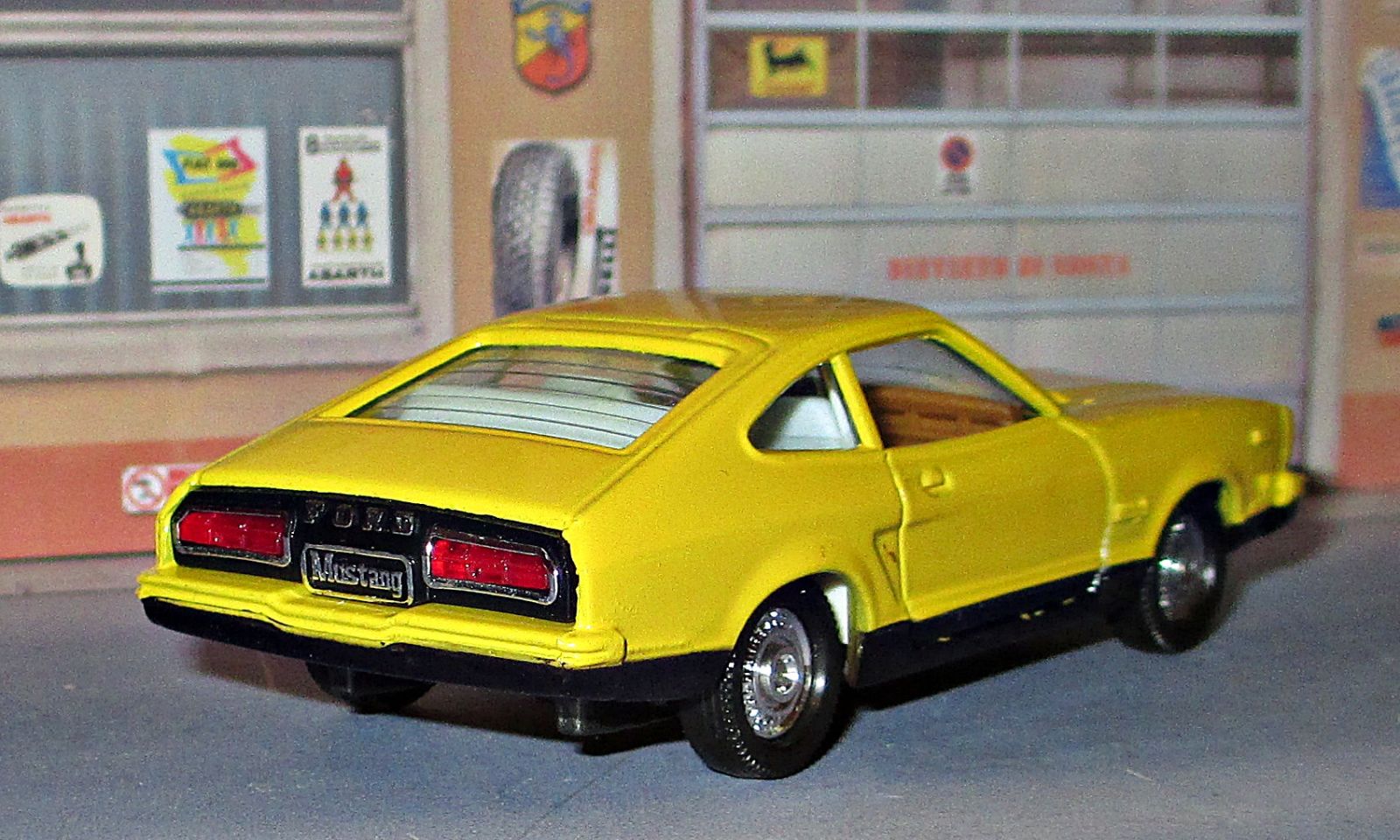
Initially, Ford didn’t even offer a V8 option in the Mustang II. Available as a coupe or three-door hatchback, the new car’s base engine was a 140 cu in (2.3 L) SOHC I4, the first fully metric-dimensioned engine built in the U.S. A 171 cu in (2.8 L) V6 was the sole optional engine. Mustang II packages ranged from the base “Hardtop,” 2+2 hatchback, a “Ghia” luxury group with vinyl roof, and the top of the line V6-powered Mach 1 shown here.

With oil crisis memories starting to fade, Ford needed a V8 in the Mustang II to return “performance to respectable levels.” The engine bay was re-engineered to accept the 302 cu in (4.9 L) V8 option for the 1975 model year, with revised hood and header panel. The engine was limited to a two-barrel carburetor and “net” 140 hp. Testing by Road & Track “recorded zero to 96 km/h (60 mph) in 10.5 seconds, and a top speed of 171 km/h (106 mph).” I’m not sure that these figures were truly respectable even back then.
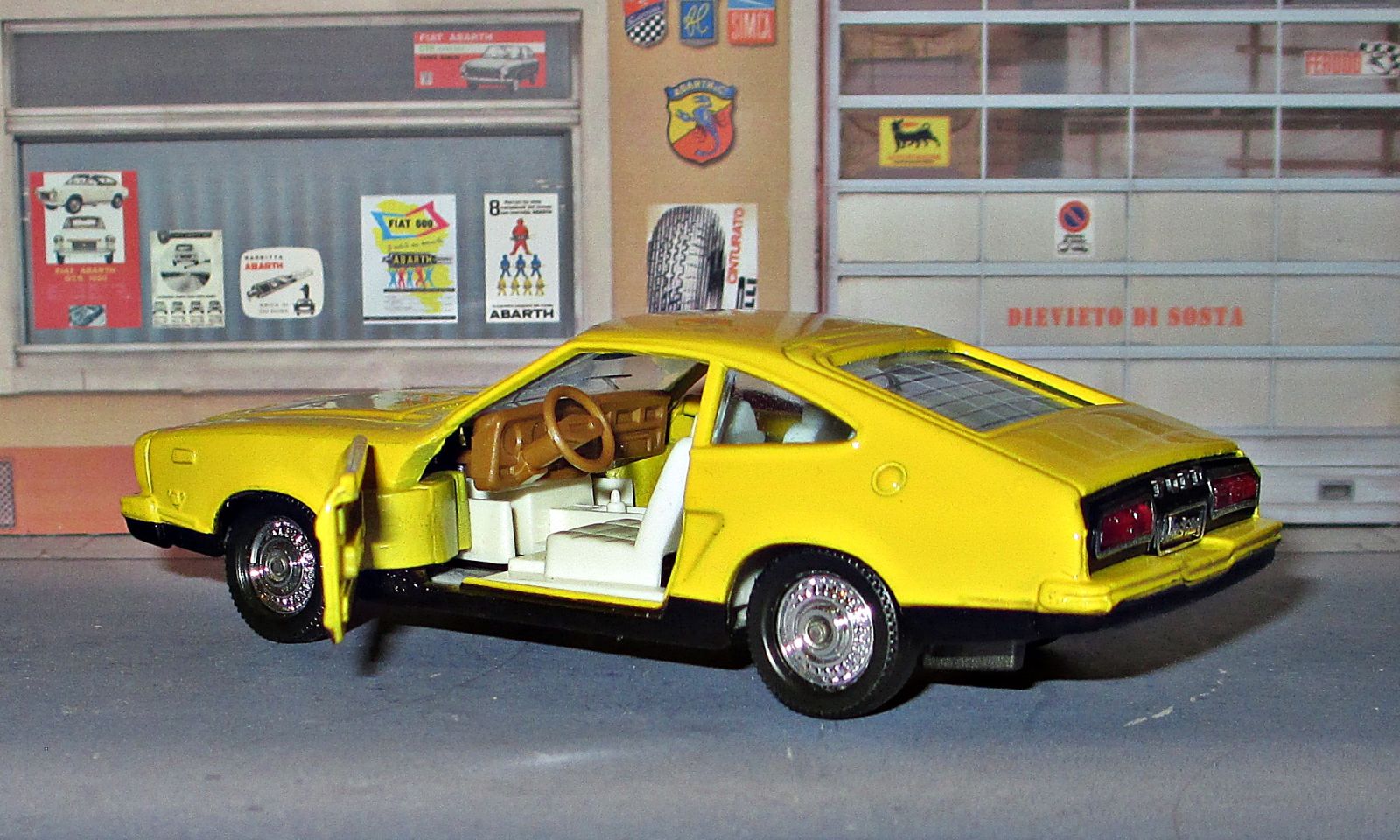
The Mustang II was named Motor Trend’s Car of the Year, in 1974, the only Mustang to achieve that honor until 1994. Nevertheless, there were also mixed contemporary reviews including Consumer Reports reporting that “there are better subcompacts on the market than the Mustang II” and recommended the AMC Gremlin as a car that was at least as good, and in some respects superior, in terms of seating, noise level, normal and emergency handling, and acceleration.
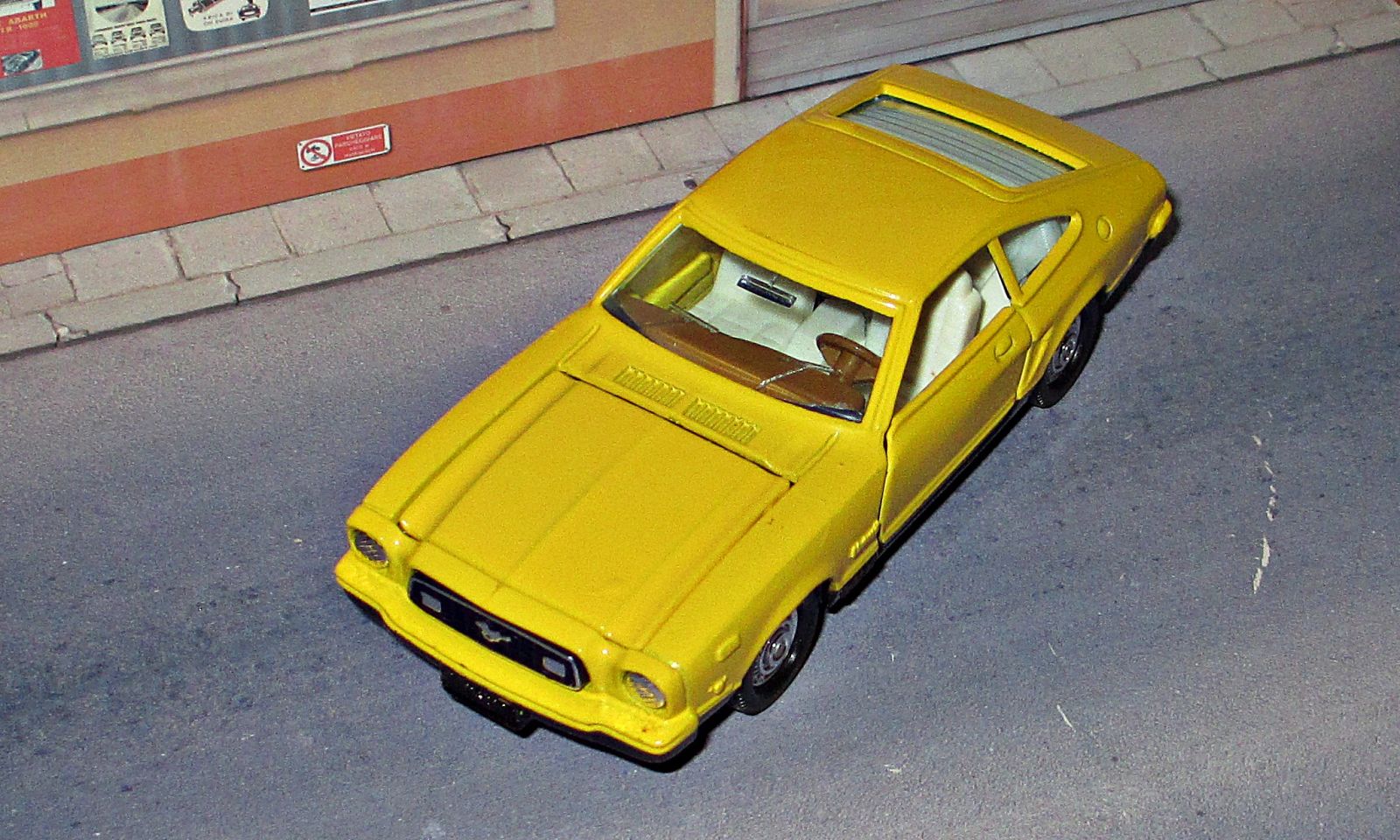
Consumer reaction to the Mustang II was enthusiastic with a combined total production of the 1974–1978 models exceeding 1.1 million. “As the smallest, lightest Mustang since the original, it was a fresh start for Ford’s pony car and a refreshing return to rationality. And it couldn’t have been better timed, introduced just two months before the first “Energy Crisis” upended America. People came in droves to see the Mustang II—and to buy.”
Writers of the past few years tend to ignore the huge successes of the Mustang II and point out flaws as evaluated by today’s standards. Edmunds Inside Line wrote of the Mustang II: “It was too small, underpowered, handled poorly, terribly put together, ill-proportioned, chintzy in its details and altogether subpar. It’s a fine line between hero and zero.
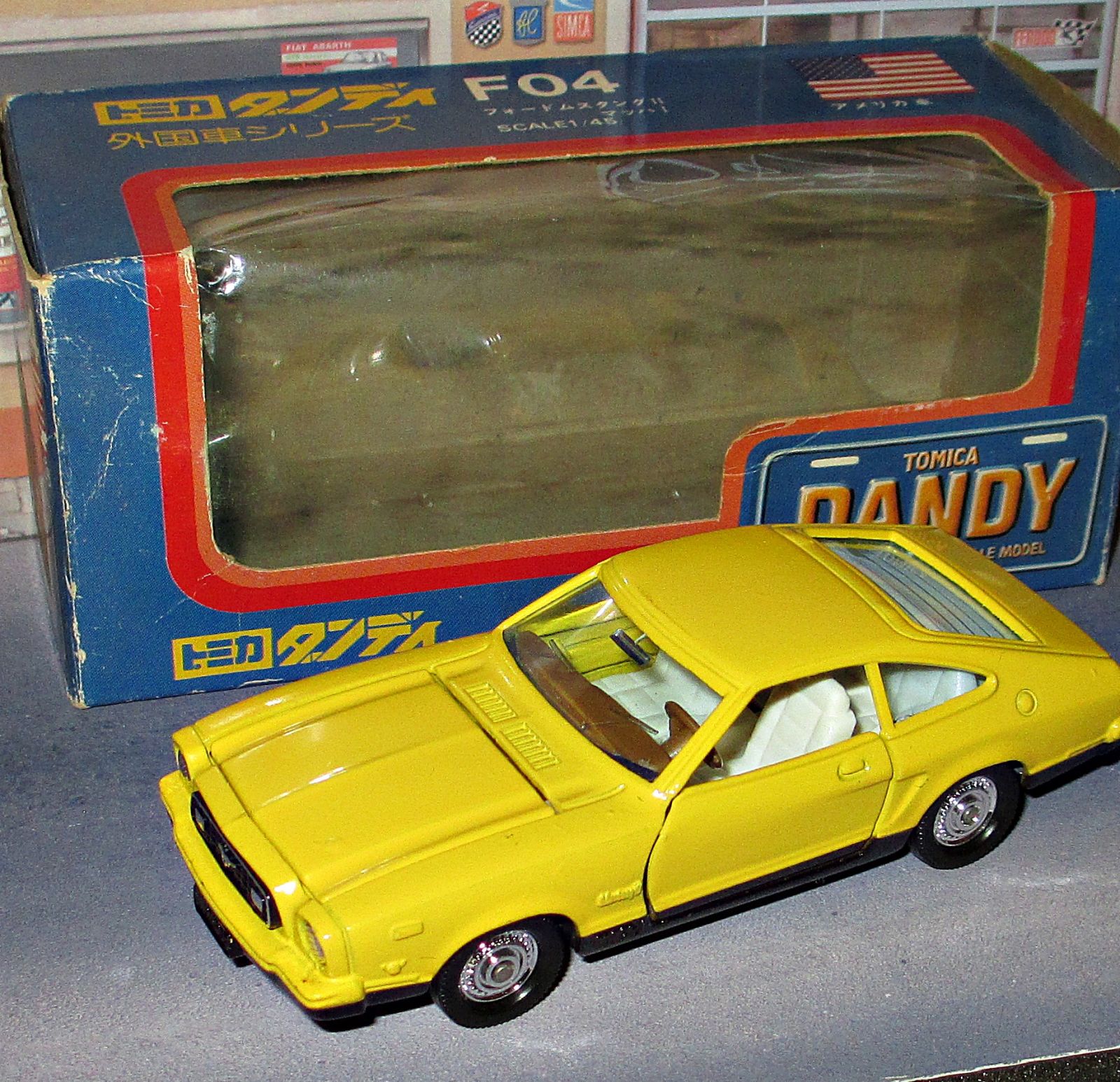
In case you hadn’t guessed it, the model is a Tomica Dandy. The notch back “Hardtop” Mustang II appeared in the Tomica F-Series for a number of years, the hatchback was exclusive to the Dandy line-up.